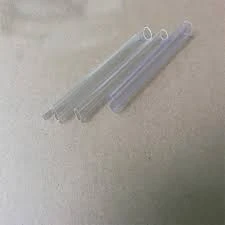Dec . 01, 2024 22:49 Back to list
hdpe board
Understanding HDPE Board A Versatile Material for Modern Applications
High-Density Polyethylene (HDPE) board is a highly durable plastic material that has gained significant popularity across various industries due to its impressive physical and chemical properties. This article delves into what HDPE board is, its benefits, and its wide range of applications.
What is HDPE Board?
HDPE, or High-Density Polyethylene, is a type of thermoplastic made from petroleum. When formed into sheets, HDPE boards exhibit a high strength-to-weight ratio and remarkable impact resistance. With a density that allows it to be rigid while remaining relatively lightweight, HDPE is an ideal material for numerous applications, from industrial uses to product manufacturing.
The boards are available in various thicknesses and colors, providing flexibility for different purposes. Moreover, they can be easily fabricated using standard tools, making them an accessible choice for both professionals and DIY enthusiasts.
Benefits of HDPE Board
1. Durability HDPE boards are resistant to many chemicals, UV rays, and harsh weather conditions. This makes them suitable for both indoor and outdoor applications, as they do not warp, crack, or splinter over time.
2. Low Maintenance Unlike wood, which requires regular painting and sealing, HDPE boards need minimal upkeep. They can be cleaned easily with soap and water, making them a practical choice for busy environments.
3. Environmental Friendliness HDPE is recyclable, which appeals to environmentally-conscious consumers and companies. Many manufacturers produce HDPE boards from recycled materials, reducing waste and promoting sustainability.
4. Safety The non-toxic nature of HDPE means that it does not release harmful chemicals, making it safe for food contact applications and playground equipment.
hdpe board

5. Versatility The adaptability of HDPE boards extends to a multitude of applications. They can be used in various settings, from residential projects to industrial environments.
Applications of HDPE Board
HDPE boards are employed in numerous sectors, showcasing their versatility
1. Construction In the construction industry, HDPE boards serve as a robust alternative to plywood and other traditional materials. They are often used for outdoor decking, ramps, and protective barriers.
2. Furniture Making The furniture industry has recognized HDPE for its durability and aesthetic appeal. It is commonly used in the production of outdoor furniture, such as tables, chairs, and benches.
3. Signage Due to its ability to withstand the elements, HDPE is a popular choice for outdoor signage. Companies utilize HDPE boards for creating durable, weather-resistant signs that retain their color and quality over time.
4. Packaging The flexibility and strength of HDPE make it an ideal material for packaging applications. It is frequently used to produce containers, bottles, and various types of packaging systems.
5. Recreational Areas HDPE is also used in parks and recreational areas for items like playground equipment, picnic tables, and park benches, where its weather resistance and safety features provide long-lasting solutions.
Conclusion
In conclusion, HDPE board is a remarkable material that offers a wide range of benefits, including durability, low maintenance, and environmental friendliness. Its versatility allows it to cater to various industries, from construction to recreational products. As the demand for sustainable and durable materials continues to grow, HDPE boards will likely play an increasingly important role in shaping the future of many sectors. Embracing this innovative material not only enhances products but also promotes a more environmentally conscious approach to manufacturing and design.
-
High-Precision PVC Rigid Sheets for Vacuum Forming | AI-Optimized
NewsAug.05,2025
-
Durable PVC-M Water Supply Pipes | 60-Year Life
NewsAug.04,2025
-
Premium HDPE Water Supply Pipes: Durable & Leak-Proof
NewsAug.03,2025
-
Premium PVC-M Water Supply Pipe - Durable & Efficient
NewsAug.02,2025
-
HDPE Drainage & Irrigation Pipe - Durable, Efficient Solutions
NewsAug.01,2025
-
Premium PVC Transparent Pipe: Durable & Clear Solutions
NewsJul.31,2025

